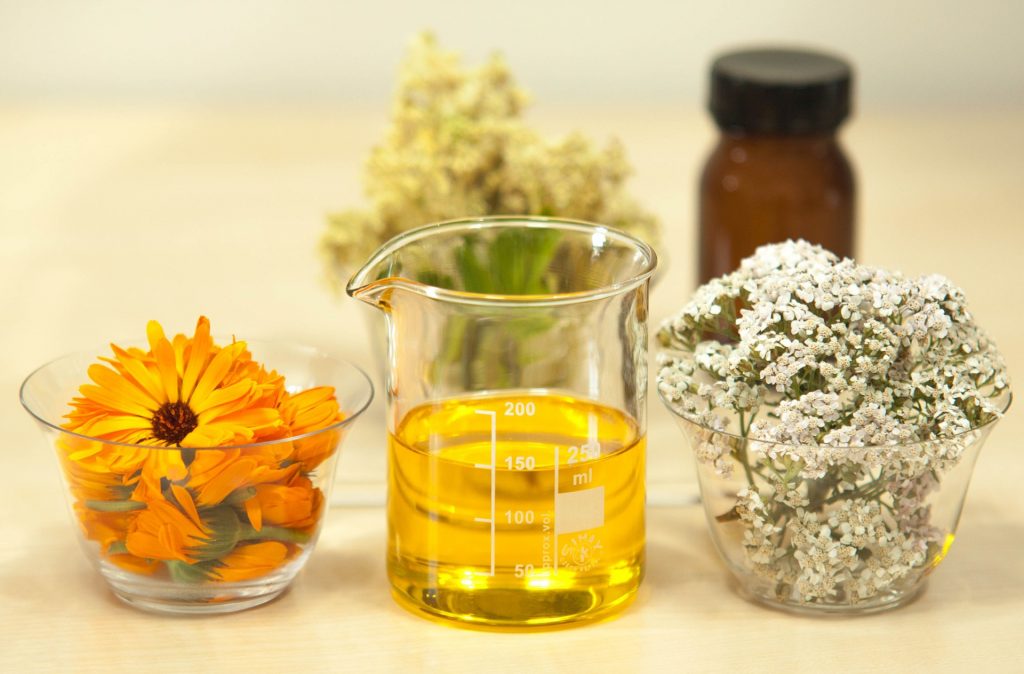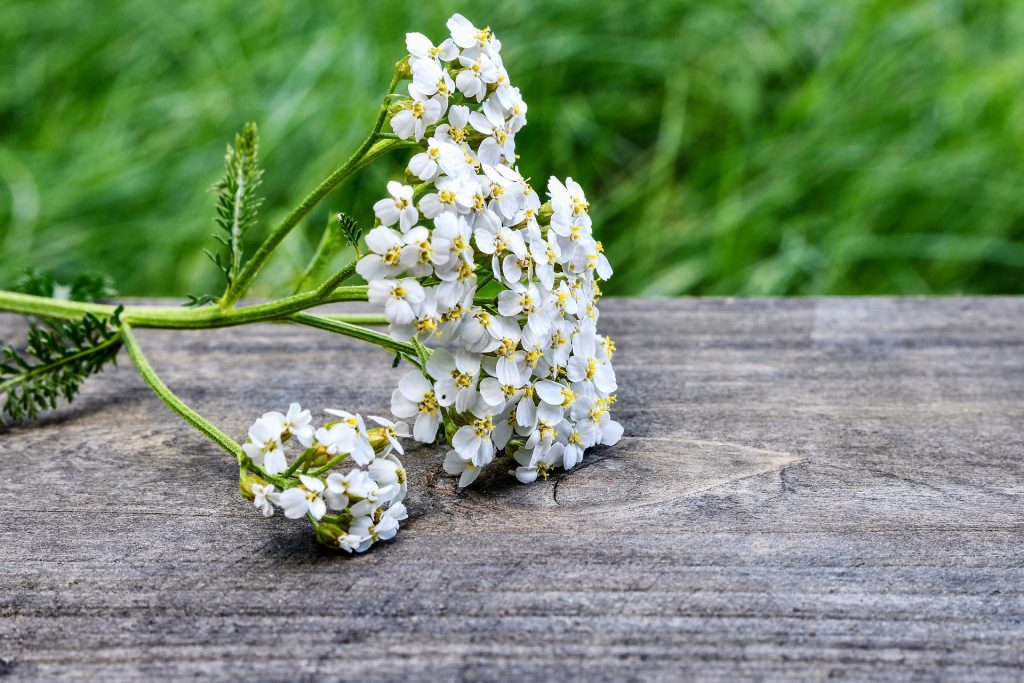 Yarrow (Achillea millefolium) is a flowering plant that belongs to the Asteraceae (daisy) family of flowering plant. Yarrow is often also called gordaldo, old man’s pepper, devil’s nettle, soldier’s woundwort and nosebleed plant. Hairy leaves grow from the long stems, and pinky white flowers radiate like disks from the top of the plant. The plant can be found growing native in temperate regions of the northern hemisphere, but has been introduced to certain southern hemisphere countries such as New Zealand. The plant is sometimes considered a weed, but evidence suggests that extracts of yarrow may have medicinal effects. Yarrow is of interest medicinally because it may exert anti-anxiety effects in humans and animals. Yarrow is from the same family of plant as chamomile, and its similar phytochemical constituents may explain its similar medicinal effects. Yarrow also possesses antioxidant and anti-inflammatory effects that may be due to the phytochemistry it contains.
Yarrow (Achillea millefolium) is a flowering plant that belongs to the Asteraceae (daisy) family of flowering plant. Yarrow is often also called gordaldo, old man’s pepper, devil’s nettle, soldier’s woundwort and nosebleed plant. Hairy leaves grow from the long stems, and pinky white flowers radiate like disks from the top of the plant. The plant can be found growing native in temperate regions of the northern hemisphere, but has been introduced to certain southern hemisphere countries such as New Zealand. The plant is sometimes considered a weed, but evidence suggests that extracts of yarrow may have medicinal effects. Yarrow is of interest medicinally because it may exert anti-anxiety effects in humans and animals. Yarrow is from the same family of plant as chamomile, and its similar phytochemical constituents may explain its similar medicinal effects. Yarrow also possesses antioxidant and anti-inflammatory effects that may be due to the phytochemistry it contains.

The phytochemical composition of yarrow (Achillea millefolium) is complex with over 120 compounds being isolated and identified from extracts. Yarrow contains mainly an essential oil, flavonoids, dicaffeoylquinic acid and sesquiterpene lactones. All of these compounds may explain in part the anxiolytic effects of the plant. It is interesting that both chamomile and yarrow contain apigenin, a flavonoid that belongs to the flavone subgroup of flavonoids. Apigenin has been shown to bind to the benzodiazepine receptor and to exert calmative, anxiolytic and sedative effects. Other flavones in yarrow include luteolin ,artemetin and casticin. In addition, yarrow contains the flavonoid quercetin, which belongs to the flavonol subgroup of flavonoids. Quercetin has also been shown to bind to the benzodiazepine receptor and so could contribute to the anxiolytic effects of yarrow.
Animal studies suggest that yarrow extracts may exert anxiolytic effects. For example, in one study, mice administered yarrow extracts demonstrated reduced anxiety when exposed to experimental stress. These anxiolytic effects were evident when the yarrow was administered both chronically and acutely. In addition, the doses of yarrow used did not cause obvious sedation in the animals. The effects of the yarrow extracts were blocked partly by the drug flumazenil, which is able to inhibit activation of the benzodiazepine receptor. Therefore it is likely that yarrow contains phytochemicals that can activate the benzodiazepine receptor, and this may be the mechanism by which yarrow exerts its anxiolytic effects. Therefore animal experiments support the traditional use of yarrow as a mood enhancing herb. In traditional medicine yarrow is often taken as a tea in a similar way to chamomile. However, yarrow can also be used externally as a lotion or poultice to treat wounds.

The distinctive flowers of yarrow (Achillea millefolium). Yarrow belongs to the same family as chamomile, and shares many of the same medicinal properties.
Eat Well, Stay Healthy, Protect Yourself
RdB
